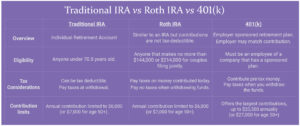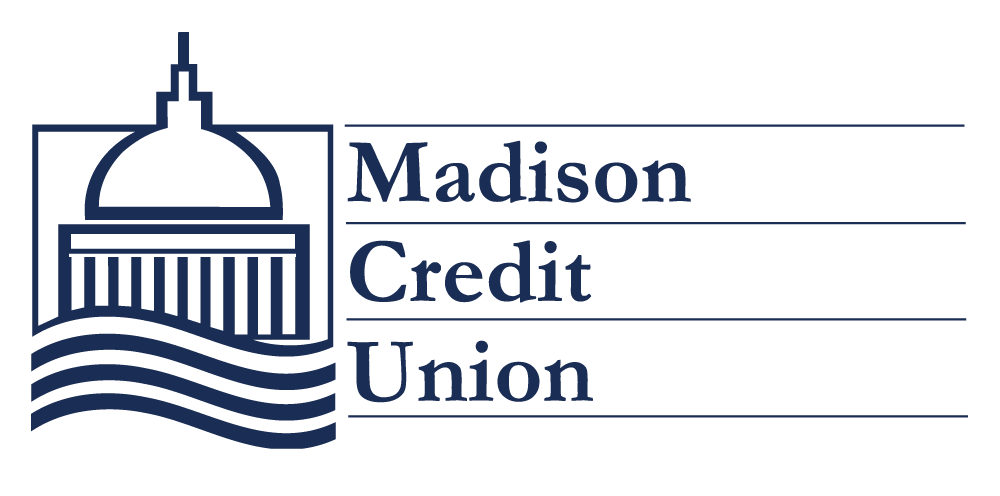Summer’s just begun, but the scams never stop. Phishing scams are deceitful attempts by cyber…
How to Choose a Retirement Account
How to Choose a Retirement Account
The ins and outs of 401(k)s, IRAs and more
It’s never too early to get started thinking about your retirement. But how much should you save and how should you save it? Here are some tips to get you started or to give you a retirement refresher course.
401(k)
One of the best ways to save for retirement is through an employer sponsored 401(k) or Roth 401(k). (Roth means the contribution is taxed today, not in the future.) You can generally choose how much money you would like to contribute but if your company matches a certain amount then it’s smart to contribute at least that much, because it’s free money and who doesn’t like free money. Employer matching is why a 401(k) is generally the best way to start paying for retirement. If you leave your job you can usually roll them over into another employer sponsored 401(k) or into a private IRA/Roth IRA. Another benefit to 401(k)s is that they have a very high contribution limit ($20,000 annually or $27,000 if you file taxes jointly).
401(k) Key Takeaways:
- Employer sponsored
- Employers often match a percentage of your contribution
- Most 401(k)s are tax deferred, meaning you don’t pay interest until you withdraw the funds
- Can be a standard 401(k) or Roth 401(k)
- A very high annual contribution limit of $20,000 annually (or $27,000 if you file taxes jointly)
- Depending on your company’s investment firm, there is a limited amount of investment possibilities
- Has the possibility of being able to borrow from and repay money
Traditional IRA
If you don’t have the option for a 401(k), you can set up a Traditional IRA. A Traditional IRA can be purchased at any number of financial institutions (including our own Madison Credit Union). There are two types of Traditional IRA, a Bank IRA or an Investment IRA. When purchasing a Bank IRA (or Credit Union IRA), you’re basically putting your money in an IRA savings account that carries a higher interest rate than a standard savings account. The money here is safe and secured by the NCUA for up to $250,000. If you purchase an Investment IRA through an investment firm, you will see greater rewards for your money but also greater risk, although that risk can be minimized depending on how you invest your savings. You can choose which stocks or bonds to invest in, each carrying a certain risk assessment from low to high. If going this route, it’s generally better to put your money in high-risk, high-yield accounts when you are young and can recoup a possible loss of money and in a lower risk account when you are older.
Traditional IRA key takeaways:
- Can be tax deductible today (if you don’t have a 401(k))
- Pay taxes when you withdraw the funds
- Depending on where you put your money, you can see a big return on your investment
- More flexible than a 401(k) as there are more investment options
- It has a lower annual contribution with a max of $6,000 (or $7,000 for age 50+)
- Has required minimum distributions (RMD) that you have to withdraw after age 72 (Here’s a link for more information: How To Calculate RMD)
- Not an option if you are 70.5 or older
Roth IRA
With a Roth IRA you pay taxes now and not in the future when you withdraw your funds. This is great if you already have a company sponsored 401(k) and aren’t eligible for the traditional IRA tax deduction or if you believe you will be in a higher tax bracket in the future or if you just want to pay less taxes. Any interest earned by investments in your Roth IRA grows tax-deferred as long as those earnings remain in the Roth IRA. Once those earnings become “qualified”, typically after you have had a Roth IRA for at least five years and are at least 59-1/2-years-old, you can withdraw the earnings tax-free. Roth IRAs can be purchased similarly to a Traditional IRA, as a Bank Roth IRA or Investment Roth IRA. There is no age requirement for opening a Roth IRA however you must make less than $144,000 annually (or $214,000 for couples filing jointly).
Roth IRA Key Takeaways:
- Pay taxes today, not when you take the money out
- Contributions are not tax deductible
- Once your earning become ‘qualified’ interest earned is not taxed upon withdrawal
- No required minimum distributions, if you don’t need the money you can not touch it and leave it all to your heirs
- Similar annual contribution limits as an IRA with a max of $6,000 (or $7,000 for age 50+)
- Depending on where you put your money, you can see a big return on your investment
- Must make less than $144,000 annually (or $214,000 if filing jointly)
Whichever option you choose, it’s best to leave the money where you put it. Even though there are some exceptions to taking money out early without a penalty it’s best to let the interest keep compounding and growing so you are sitting comfortably in your golden years.
Here are some other useful links:
Retirement Calculator
IRS’s Information on Required Minimum Distribution (RMD)






